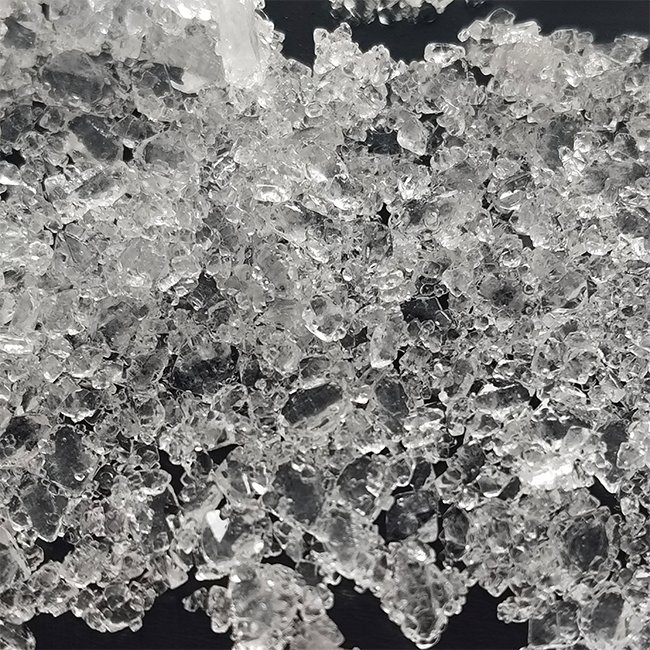Environmental impact of dipotassium hydrogen phosphate trihydrate

Environmental impact of dipotassium hydrogen phosphate trihydrate
Dipotassium hydrogen phosphate trihydrate (CAS 16788-57-1), as a common inorganic compound, has a wide range of applications in many fields. However, in the process of its production, use and disposal, it inevitably enters the environment and has a series of impacts on the ecosystem.
1. Impact of agricultural use
Dipotassium hydrogen phosphate trihydrate is often used as a fertilizer in agricultural production. It supplements crops with phosphorus and potassium, which helps crops grow stronger and increase yields. However, if the amount used is not controlled properly, excess fertilizer can be washed away by rain or irrigation water into surrounding water bodies and soil. In the soil, too much phosphorus may lead to a large accumulation of phosphorus in the soil, which can alter the physical and chemical properties of the soil, such as changing the pH of the soil, and affecting the activity and variety of microorganisms in the soil. Some beneficial microorganisms that are sensitive to acidity and alkalinity may be reduced due to the change in soil pH, which in turn disrupts the ecological balance of the soil and affects the efficiency of crop roots in absorbing other nutrients.
After flowing into water bodies, high levels of phosphorus can trigger eutrophication of water bodies. Algae and other plankton in the rich source of phosphorus nourishment, will rapidly reproduce and grow, in the water surface to form a thick water bloom. Water bloom will not only block the sunlight into the water body, affecting the photosynthesis of underwater plants, but also consume a lot of dissolved oxygen in the water. When the dissolved oxygen content in the water decreases, fish and other aquatic organisms may die due to lack of oxygen, destabilizing the entire aquatic ecosystem.
2. Impact of industrial emissions
Dipotassium hydrogen phosphate trihydrate is used in a number of industries, such as pharmaceuticals, food processing, etc. It may be used to regulate pH or as a buffering agent. In the production process, if there is no perfect wastewater treatment measures, wastewater containing Dipotassium hydrogen phosphate trihydrate is directly discharged into the environment, which will also bring many problems. Phosphorus and potassium in wastewater, when entering natural water bodies, will contribute to the eutrophication of water bodies similar to agricultural surface pollution. Moreover, industrial wastewater may contain other hazardous substances that interact with Dipotassium hydrogen phosphate trihydrate to further exacerbate the harm to the environment. Certain heavy metal ions, for example, may combine with phosphate to form complexes that are difficult to degrade and accumulate in soil and water bodies, producing toxic effects on plants and animals.
3. Potential effects on organisms
For plants, a moderate amount of Dipotassium hydrogen phosphate trihydrate can promote growth, but in excess, it may be toxic to plants. When absorbing phosphorus and potassium elements, if the plant root system absorbs too much, it will break the original elemental balance in the plant and affect the normal metabolic process of the plant. For example, excessive phosphorus will inhibit the plant's absorption of trace elements such as iron and zinc, leading to deficiency disease, yellowing of leaves, slow growth and even wilting.
In animals, Dipotassium hydrogen phosphate trihydrate and its breakdown products may accumulate in the animal's body through transmission through the food chain. Some fish that feed on aquatic plants or small aquatic animals ingest substances containing phosphorus. When these fish are consumed by humans, the excess phosphorus may affect the balance of calcium and phosphorus metabolism in the body. Prolonged intake of excess phosphorus may lead to loss of calcium from human bones and increase the risk of bone diseases such as osteoporosis.
4. Countermeasures
In order to reduce the negative impact of Dipotassium hydrogen phosphate trihydrate on the environment, in agriculture, farmers should apply fertilizers scientifically, accurately determine the amount of fertilizers based on the results of soil nutrient testing and crop growth requirements, and avoid blind over-fertilization. At the same time, slow-release fertilizer technology can be used to allow the slow release of phosphorus and potassium elements in fertilizers to improve fertilizer utilization and reduce loss. In the industrial field, enterprises must improve sewage treatment facilities and effectively treat wastewater containing Dipotassium hydrogen phosphate trihydrate. Through biological treatment, chemical precipitation and other methods, the phosphorus element in the wastewater is removed, so that it meets the emission standards before discharge. Only by paying attention to and controlling from all aspects can we reduce the harm of Dipotassium hydrogen phosphate trihydrate to the environment and maintain the health and stability of the ecosystem.
dipotassium hydrogen phosphate synonyms
dipotassium hydrogen phosphate formula
di potassium hydrogen phosphate anhydrous
dipotassium hydrogen phosphate merck
potassium phosphate dibasic anhydrous formula
dipotassium hydrogen orthophosphate cas no
dibasic potassium phosphate synonyms
dipotassium hydrogen phosphate cas no